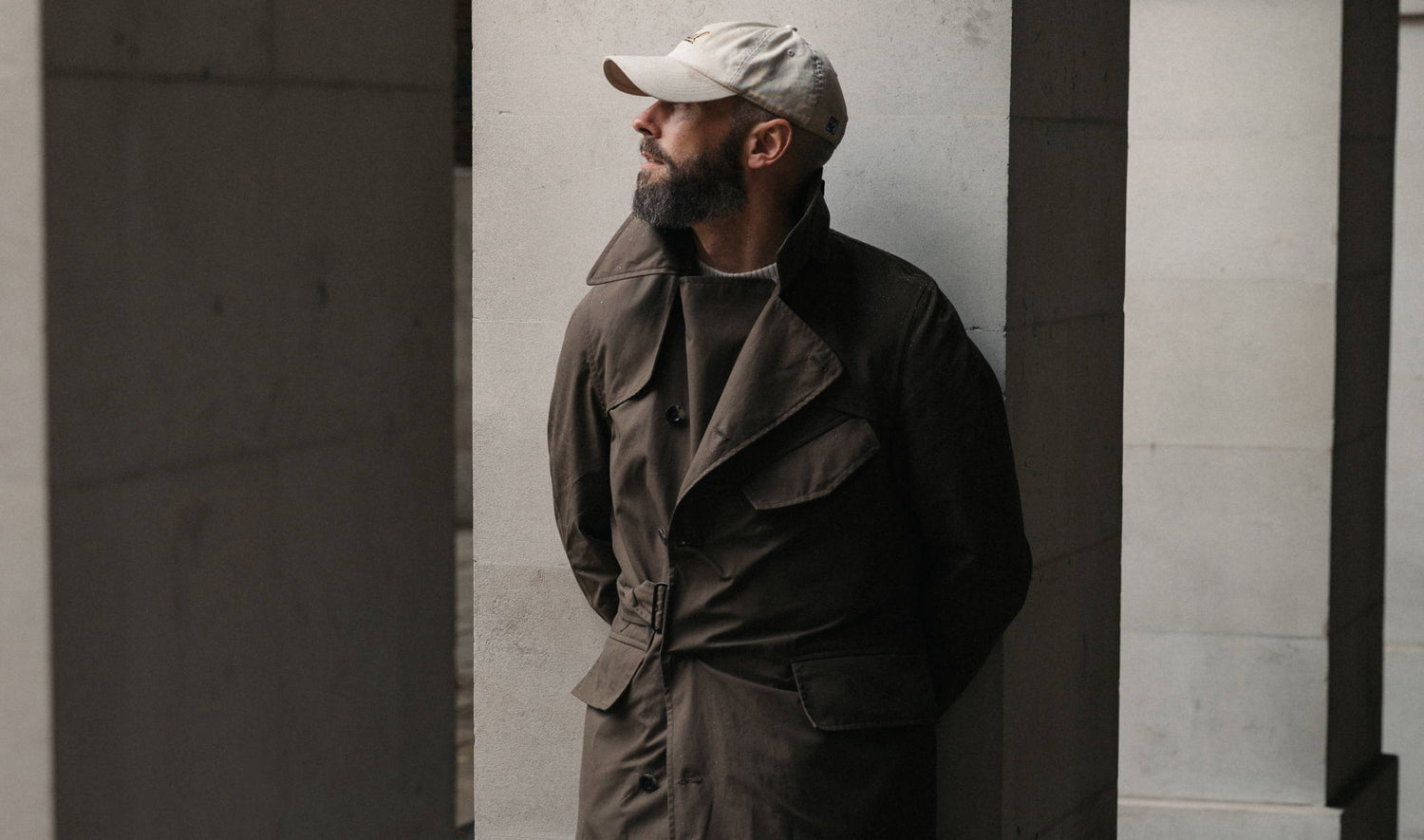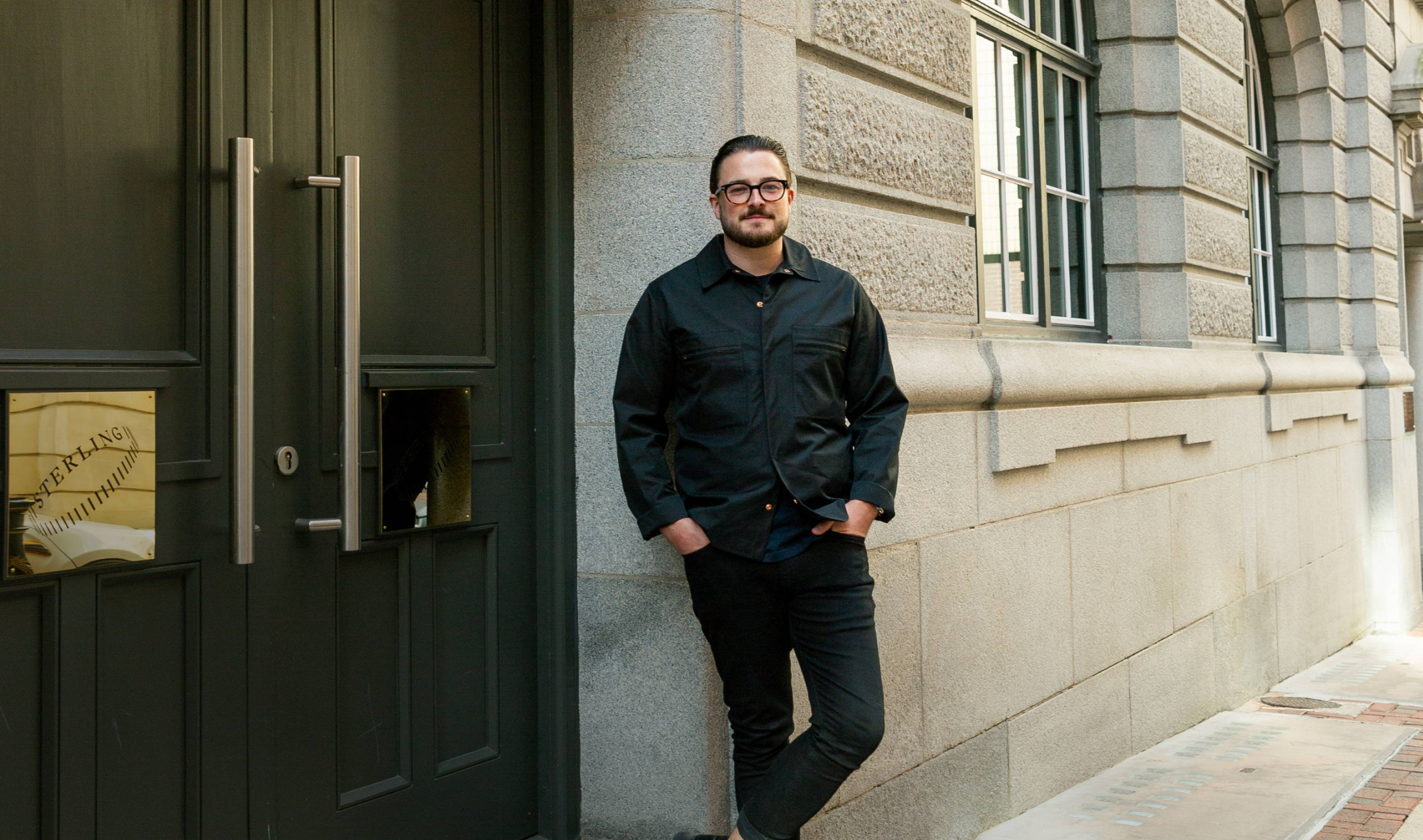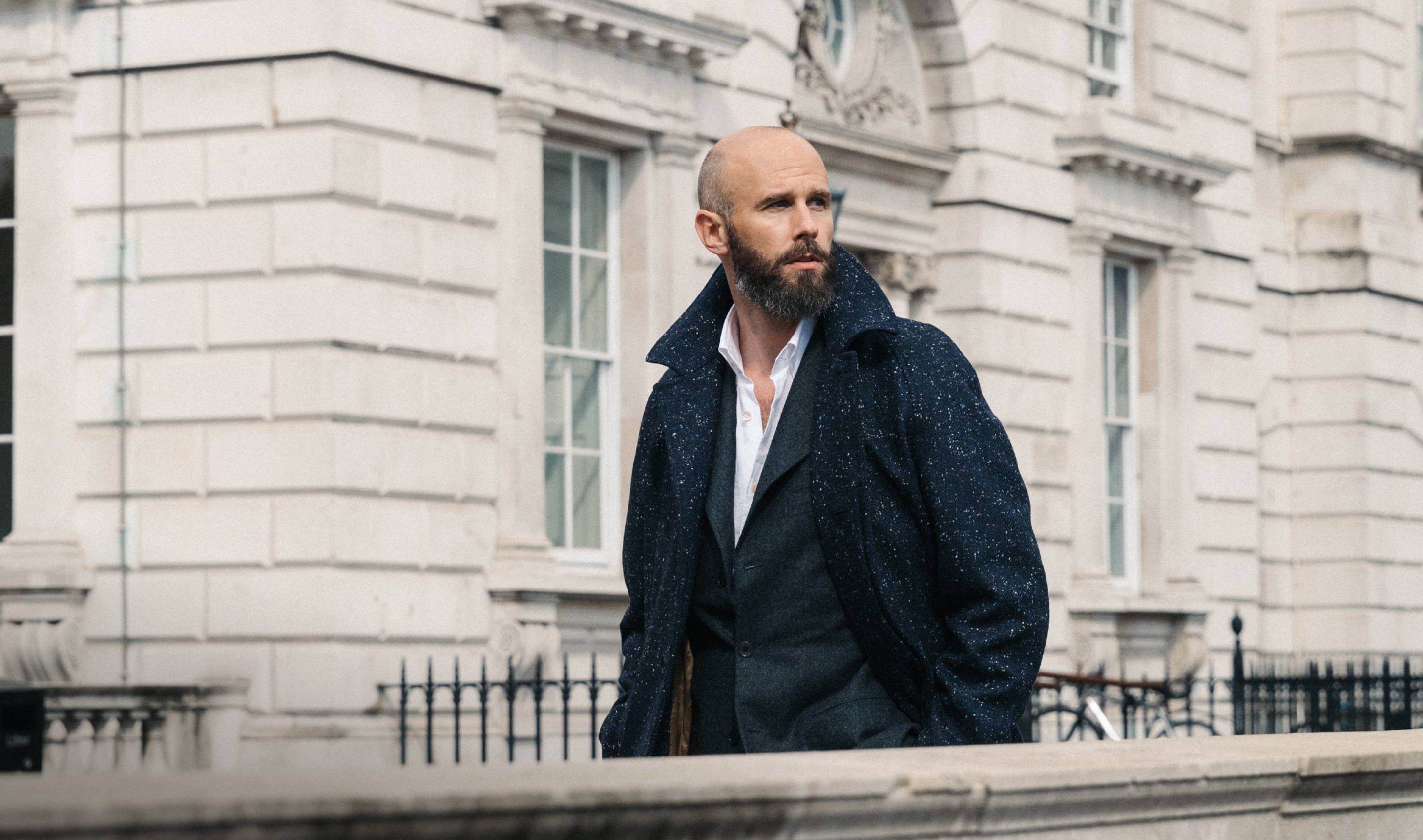Reviewed by Simon Crompton of Permanent Style London, the leading authority of classic and luxury menswear.
Three weeks ago, I received my new olive PS Trench Coat. I did have one years ago, but it was a size 3 and I’m definitely more of a 4. I also prefer the belt system on the new model.
Wearing that coat over the past couple of weeks has reminded precisely me how versatile it is.
I wore it with a grey suit and white shirt to town, with a brown jacket and beige trousers, with a knit and flannels, and with a sweatshirt and jeans.
The little test period also showed how well it can bridge the seasons. Even when it was pushing 20 degrees (68 Fahrenheit) it was fine on a rainy day, without the liner.
Coats that show this kind of versatility make me particularly happy - I think because I know from talking to readers so consistently that this is something they prize in such an expensive item, and value especially in a coat.
In this latest shoot of the PS Trench, I added one more look to the ones we shot years ago, to demonstrate that full range.
So alongside the suit, the jacket and the jeans, there’s now a simple cream knit and charcoal flannels (above).
I think it’s a lovely outfit on its own - simple and elegant - but it looks especially nice under the trench. On the feet are suitably water-resistant boots.
The combination could be a navy knit with cream trousers, a grey knit with brown, even green trousers seem to work ok, I guess because the olive colour has so much brown in it.
Of course, all of that would mean nothing if the cut of the coat wasn’t great. But I think all classic-menswear enthusiasts will appreciate that collar shape, the size of the lapels, and the overall length.
It is dramatic but extremely practical style, like most of the best menswear; certainly outerwear. Form follows function.
The silhouette is of course emphasised by cinching the waist of the Trench, which is easier now we have the simpler, pull-through-and-tuck belt at the front. (For details on that, see the launch article for the navy version here.)
At the same time, I’ve found I equally like wearing the trench buttoned up just at the neck and chest, leaving the rest open (above).
Reviewed by Simon Crompton of Permanent Style London, the leading authority of classic and luxury menswear.
Three weeks ago, I received my new olive PS Trench Coat. I did have one years ago, but it was a size 3 and I’m definitely more of a 4. I also prefer the belt system on the new model.
Wearing that coat over the past couple of weeks has reminded precisely me how versatile it is.
I wore it with a grey suit and white shirt to town, with a brown jacket and beige trousers, with a knit and flannels, and with a sweatshirt and jeans.
The little test period also showed how well it can bridge the seasons. Even when it was pushing 20 degrees (68 Fahrenheit) it was fine on a rainy day, without the liner.
Coats that show this kind of versatility make me particularly happy - I think because I know from talking to readers so consistently that this is something they prize in such an expensive item, and value especially in a coat.
In this latest shoot of the PS Trench, I added one more look to the ones we shot years ago, to demonstrate that full range.
So alongside the suit, the jacket and the jeans, there’s now a simple cream knit and charcoal flannels (above).
I think it’s a lovely outfit on its own - simple and elegant - but it looks especially nice under the trench. On the feet are suitably water-resistant boots.
Various small updates have been made since the original in 2017, including a more secure liner, studs to fasten the throat latch, and a removal of the D-rings on the belt, which seemed a little antiquated (no function to drive form there).
The cotton Ventile® is entirely waterproof once the seams are taped, and it doesn’t have the nasty rustle of synthetic waterproofs. Ventile® also ages really nicely - softening and fading slowly at the seams, like other cottons.
The length is crucial. Trench coats have been cut shorter and shorter in recent years, which not only denies them the swish and swagger of a long coat, but is highly impractical. In the rain, water simply streams off the bottom and onto your knees.
Throughout the design process, the guiding philosophy was not to skimp on detail. Details, after all, are what a good trench coat is all about.
So it has:
- Big hip pockets, with wool/cashmere lining in the front
- That angled despatch chest pocket
- A great throat latch on the collar (giving protection right up around the chin)
- In-set sleeves on the front of the coat, to give a cleaner appearance, but raglan sleeves on the back, to aid movement
- Gun flaps on the shoulders at the front, and a saddle piece across the back
- Dark-brown horn buttons, fastening that double-breasted front all the way up
- Every garment is handcrafted in the our factory in Manchester, England
The sizing measurements are set out below. Note that in these images I am wearing a medium (4) whereas in previous shots of the olive I wore a small (3).
I think this demonstrates how much most people can wear two sizes with this kind of coat - given its raglan fit and ability to cinch the waist as much as you want.
It's really a case of how close you want the coat to be, and what you will wear under it most of the time. I liked the small, but it was tight over a suit. The medium is better, and never looks big (as you can see with the thin knit here) because of that belt at the waist.
The coat is available in olive now, in size XS to XXL, here.
There are also a small selection of navy colourways left from last year, in sizes S - XL here.
Photography: Milad Abedi @milad_abedi
THE PERMANENT STYLE MOTOR TRENCH
The combination could be a navy knit with cream trousers, a grey knit with brown, even green trousers seem to work ok, I guess because the olive colour has so much brown in it.
Of course, all of that would mean nothing if the cut of the coat wasn’t great. But I think all classic-menswear enthusiasts will appreciate that collar shape, the size of the lapels, and the overall length.
It is dramatic but extremely practical style, like most of the best menswear; certainly outerwear. Form follows function.
The silhouette is of course emphasised by cinching the waist of the Trench, which is easier now we have the simpler, pull-through-and-tuck belt at the front. (For details on that, see the launch article for the navy version here.)
At the same time, I’ve found I equally like wearing the trench buttoned up just at the neck and chest, leaving the rest open (above).
The advantage of this buttoning is that you have easy access to layers underneath, and it still protects against the vast majority of rain. It’s a little like a cape in that respect.
More significantly, it’s a different style - a different look. And perhaps one that’s a little less traditional.
It might seem a little geeky talking about buttoning orientations, but with something like a raincoat I find I put it on quickly and want to fasten it without much thought. It’s nice to have one or two defaults, and not need to play around with it.
Everything else about the PS Trench has been said before, in the launch article here.
If you would like more detailed information, you can find it there. But the essentials are that it is a waterproof coat made in cotton Ventile®, with taped seams.
Its design combines the best (in my view) of a traditional despatch rider's coat (like the angled chest pocket) and a traditional trench coat, which contributes to the button orientation, the back yoke and the length.
It comes with a removable grey-flannel liner which makes it wearable most of the year.
Various small updates have been made since the original in 2017, including a more secure liner, studs to fasten the throat latch, and a removal of the D-rings on the belt, which seemed a little antiquated (no function to drive form there).
The cotton Ventile® is entirely waterproof once the seams are taped, and it doesn’t have the nasty rustle of synthetic waterproofs. Ventile® also ages really nicely - softening and fading slowly at the seams, like other cottons.
The length is crucial. Trench coats have been cut shorter and shorter in recent years, which not only denies them the swish and swagger of a long coat, but is highly impractical. In the rain, water simply streams off the bottom and onto your knees.
Throughout the design process, the guiding philosophy was not to skimp on detail. Details, after all, are what a good trench coat is all about.
So it has:
- Big hip pockets, with wool/cashmere lining in the front
- That angled despatch chest pocket
- A great throat latch on the collar (giving protection right up around the chin)
- In-set sleeves on the front of the coat, to give a cleaner appearance, but raglan sleeves on the back, to aid movement
- Gun flaps on the shoulders at the front, and a saddle piece across the back
- Dark-brown horn buttons, fastening that double-breasted front all the way up
- Every garment is handcrafted in the our factory in Manchester, England
The sizing measurements are set out below. Note that in these images I am wearing a medium (4) whereas in previous shots of the olive I wore a small (3).
I think this demonstrates how much most people can wear two sizes with this kind of coat - given its raglan fit and ability to cinch the waist as much as you want.
It's really a case of how close you want the coat to be, and what you will wear under it most of the time. I liked the small, but it was tight over a suit. The medium is better, and never looks big (as you can see with the thin knit here) because of that belt at the waist.
The coat is available in olive now, in size XS to XXL, here.
There are also a small selection of navy colourways left from last year, in sizes S - XL here.
Photography: Milad Abedi @milad_abedi
THE PERMANENT STYLE MOTOR TRENCH






Leave a comment
This site is protected by hCaptcha and the hCaptcha Privacy Policy and Terms of Service apply.